(650) 766-1883
Email Us

The EpicOncology™ platform contains three distinct modules: Epic Analyses, Epic Flow, and Epic Core. Each module provides a critical component for working with our cancer data sets.
Your EpicOncology™ subscription grants you full access to all three modules. Let’s illustrate how they integrate into your cancer epidemiology research.
The Epic Analyses module gives you detailed data tables with interactive graphs, all of which you can filter by stage, subtype, gender, and age group.
Source and examine epidemiology statistics by stage or subtype for the years 2010 to 2040. At all times, you can identify the current year by its eray highlight.
Epic Analyses includes interactive graphs, rate calculations, an ‘Export to Excel’ feature, and links to sources, assumptions, and other Epic Modules.
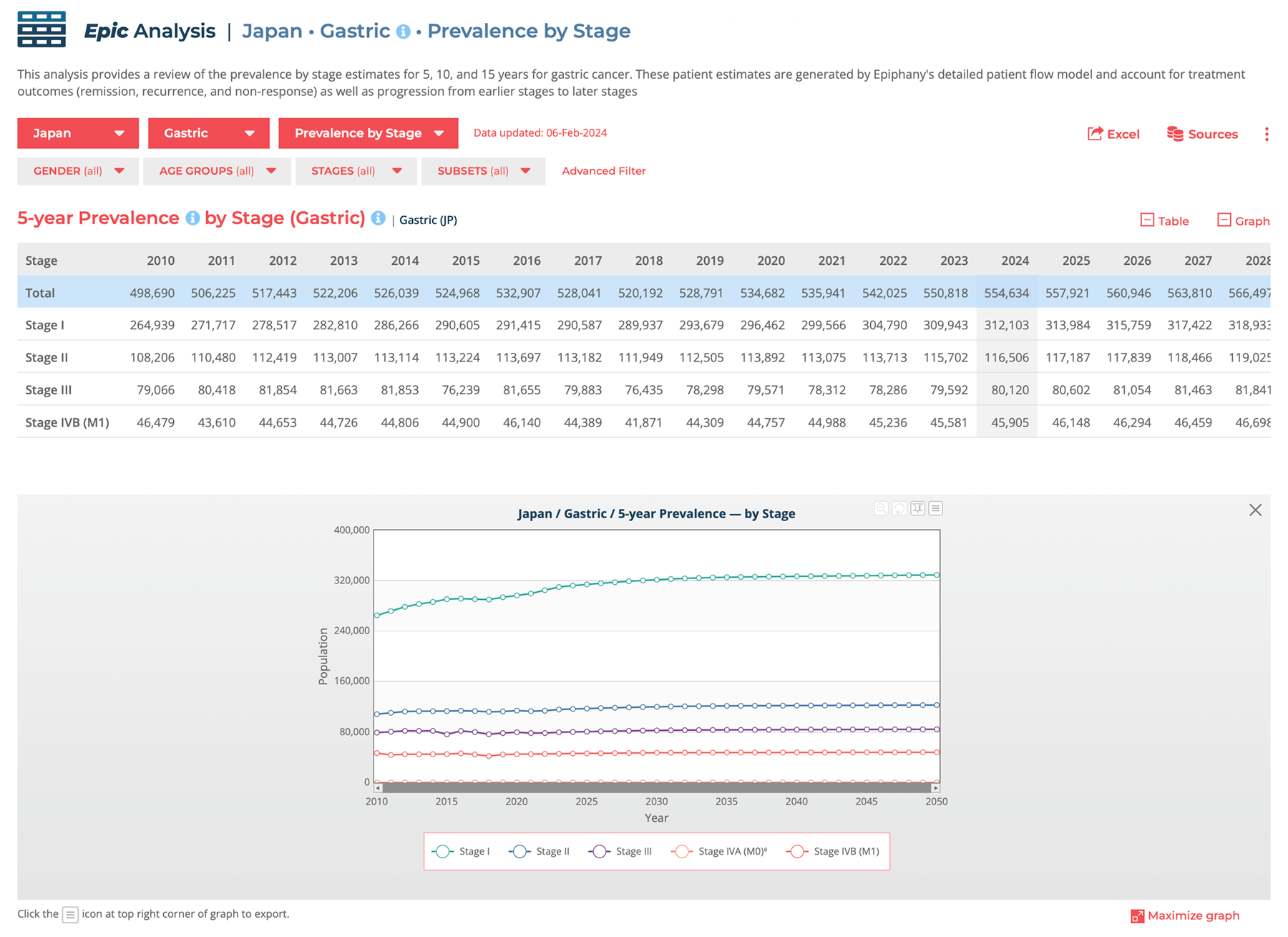
To demonstrate how thorough EpicOncology™ is, here’s a list of all data analyses available to you. These details are current as of Q2 2019.*
We group the epidemiology statistics into 5 groupings for organizational application:
*Please note: Not all analyses are available for all cancer sites. Certain epidemiology statistics will vary by site.
Generate simple or detailed flow diagrams, based on how the different statistics are related and how patients move through Epiphany’s flow models.
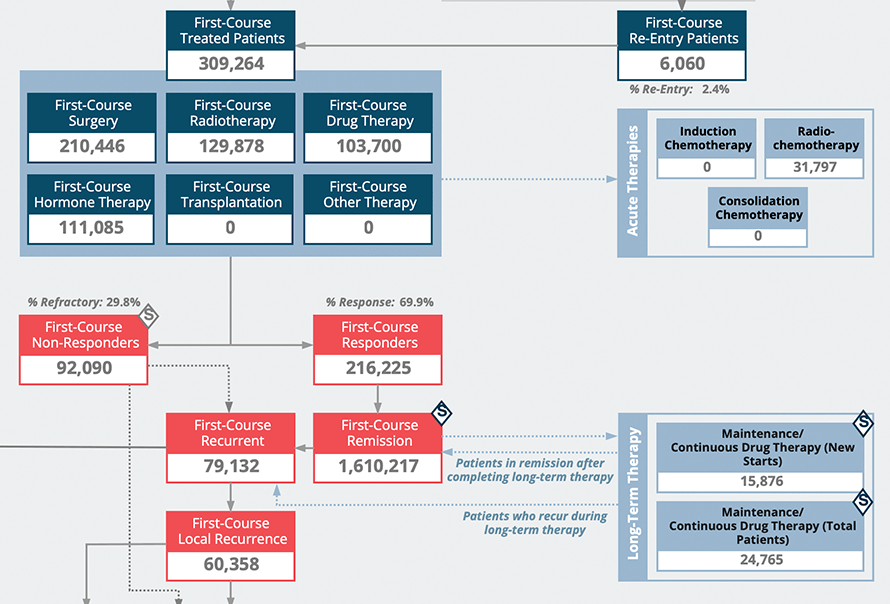
Overviews of Epiphany’s patient flow model, untreated pools, treated patients, modalities, response, remission, relapse, and progression (as appropriate).
Utility: Perspectives on how statistic related to each other and how patients move through treatment across courses of treatment.
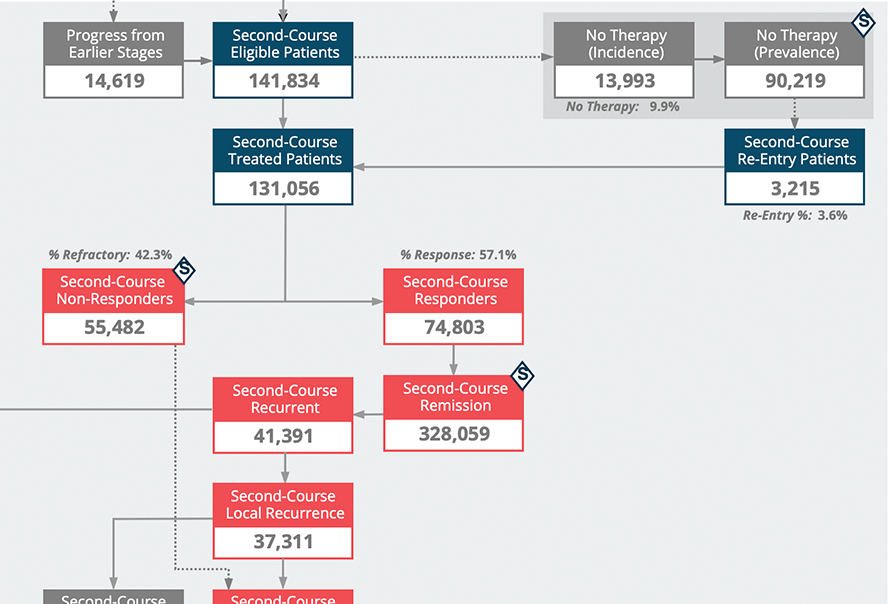
Provides the same data as the detailed flow, excluding the specific modalities.
Utility: Perspectives on patient movement through the flow model across courses of treatment.
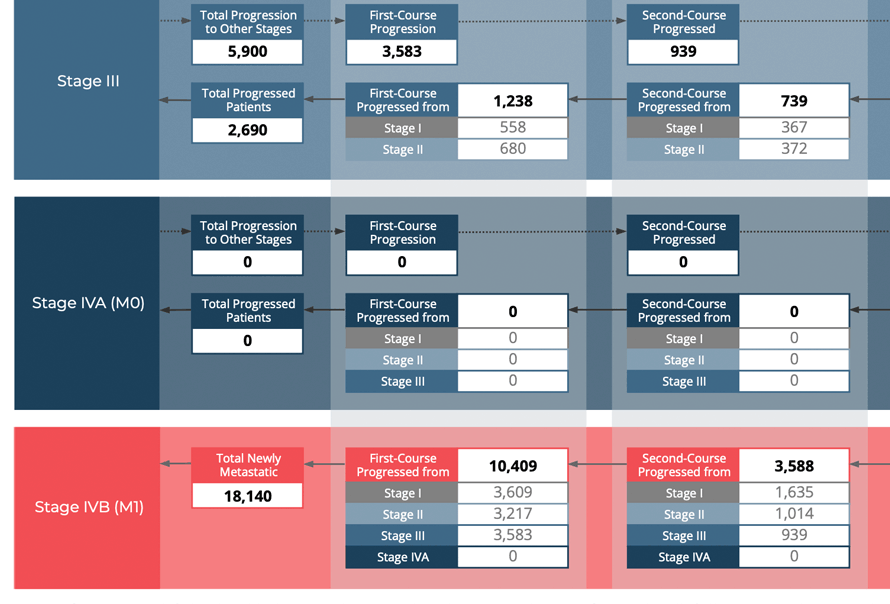
Illustrates the number of patients who progress from earlier stages to later stages. For example, from Stage I to Stage II, from Stages I and II to Stage III, or from Stages I, II, and III to Stage IV (metastatic).
Utility: Understand the size of the progressive pool of patients and the number of progressive patients that move to each subsequent stage.
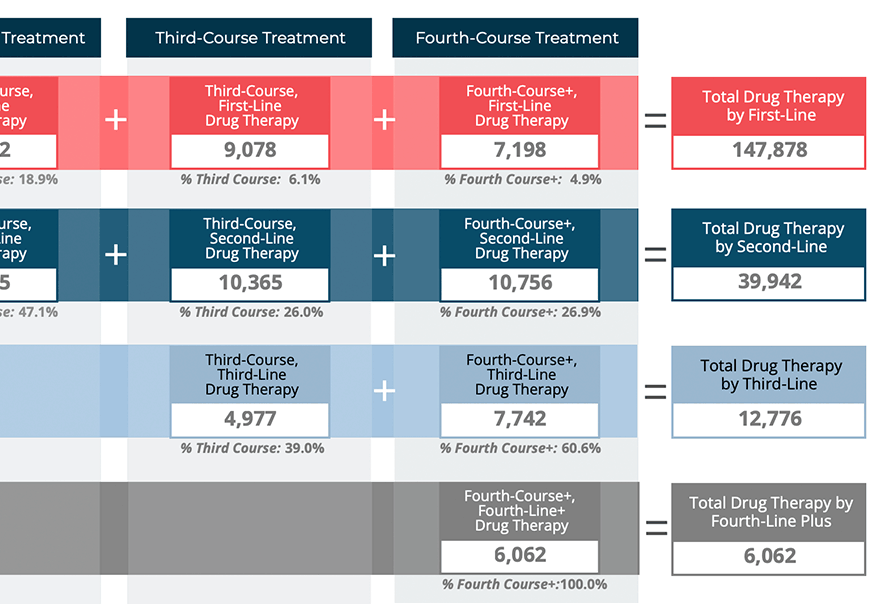
Illustrates how drug or hormone use (first-, second-, third-, and fourth-line plus) may vary across courses of treatment.
Utility: Understand how course of treatment splits each line of drug or hormone therapy, providing insight into modality utilization across courses.
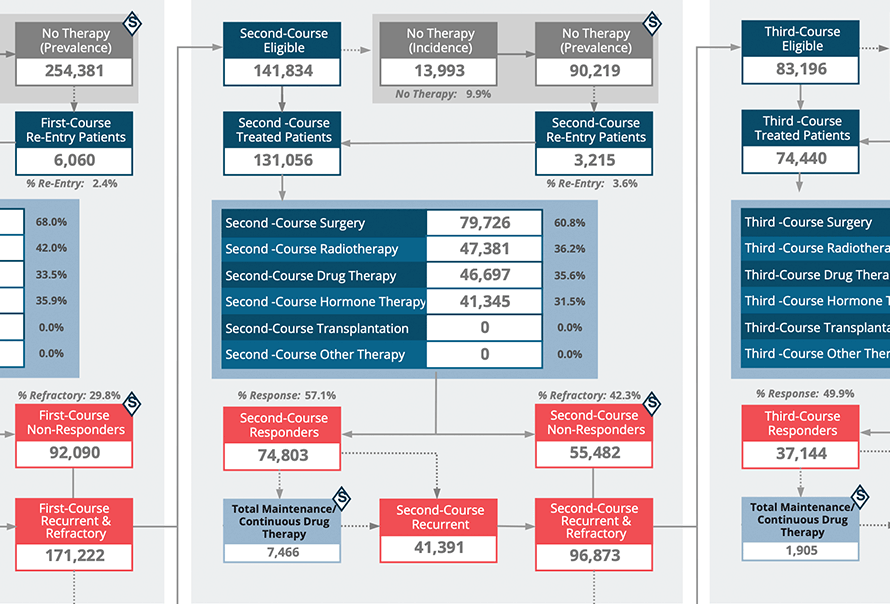
Provides perspective on how different treatment modalities are utilized across courses of treatment, including response, remission, and relapse.
Utility: Understand how the treatment modality use shifts across course of therapy, including relapse and progression (as appropriate). Generate multiple diagrams within Epic Flow, download, and paste directly into your internal documents.
The Epic Core module integrates Epiphany’s own treatment survey data for the U.S., Japan, and Western Europe.
Learn the key modalities and drug categories for current treatment options. Collect data direct from each cancer survey. Add to your global understanding of cancer treatment.
Each Epic Core summary provides detailed analyses of the survey data, and includes an indexed snapshot of available topics. Use Instant Selection links to analyze faster. Each question includes the question text and the number of responding physicians, as well.
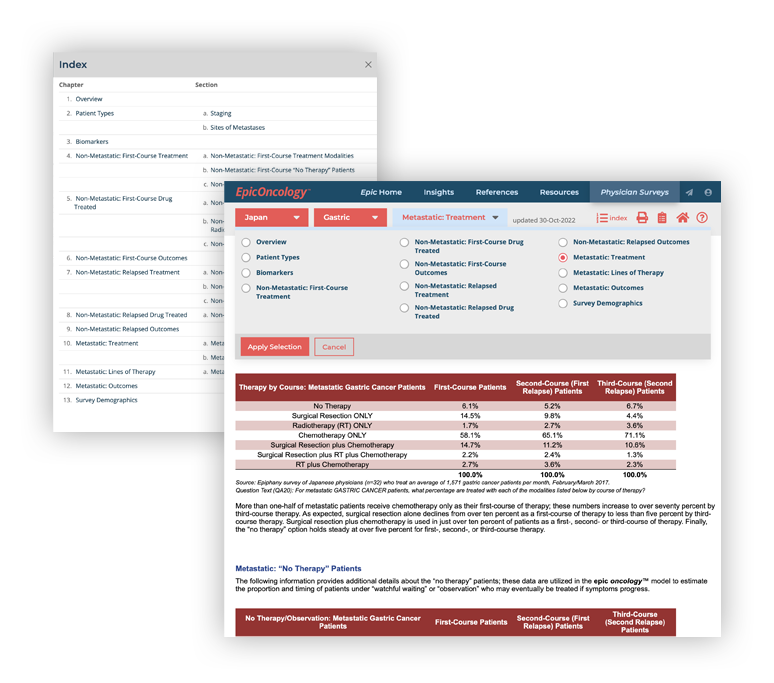
The EpicOncology™ platform presents all three modules in a unified, easy-to-use interface. Visit the link below to see how it all ties together.